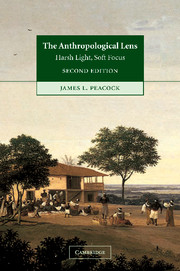Preface to the first edition
Published online by Cambridge University Press: 05 June 2012
Summary
Can you see the moon? Can you see it seen …
Gertrude Stein, A Circular PlayFall semester began, and I gave the first lecture in an introductory course in anthropology. This course, at a state university, was being taught in the gymnasium and was heavily attended by people whose clothing and demeanor suggested more interest in sports than in study. The class ended, and I asked if there were questions. I was startled when a young man inquired, “What's your hermeneutic?”
“Hermeneutic” in the narrow sense pertains to the study of texts in order to interpret their meaning. This student used the term in a broad sense. He wanted to know the meaning of this course. Perhaps he wanted to know the meaning of anthropology.
The student's question was profound. This book attempts to answer it, at an elementary level. The study of a field like anthropology can be all sound and fury, signifying nothing: exciting facts without sufficient understanding of their meanings. Introductory courses teach such facts. Such courses tell about “bones and stones,” as some students term human fossils and artifacts; the varieties of economies, governments, and family organizations throughout the world; how grammars of language vary as we move out of our Indo-European heritage to exotic cultures. What is meant by all this information?
- Type
- Chapter
- Information
- The Anthropological LensHarsh Light, Soft Focus, pp. vii - xivPublisher: Cambridge University PressPrint publication year: 2001



